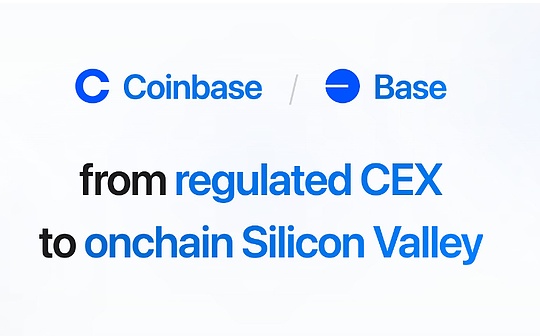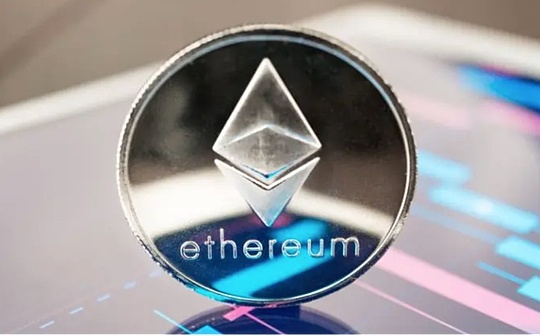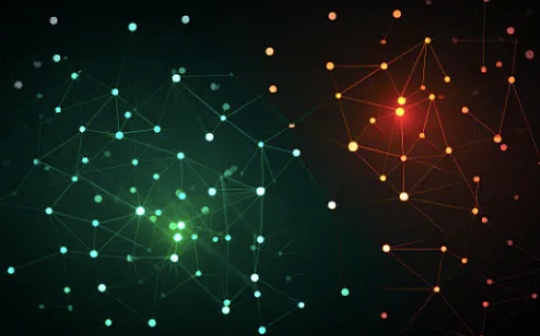
Author: Doug Petkanics, Livepeer CEO; Translation: 0xxz@作 作 作 作 作 作 作
introduction
When people find that there are thousands of GPUs in Livepeer networks that are actively used for videos of millions of minutes per week, one of the most common questions is whether these GPUs can be used to perform other types of calculations.In particular, with the rise of artificial intelligence in 2023 and the growth of GPU (hardware used to perform artificial intelligence training and reasoning), people will naturally thinkThe artificial intelligence infrastructure costs billions of dollars.The data center business of NVIDIA provides GPUs for AI computing. In the last quarter, it achieved a revenue growth of $ 14 billion in revenue, which was higher than the US $ 4 billion in the same period last year.
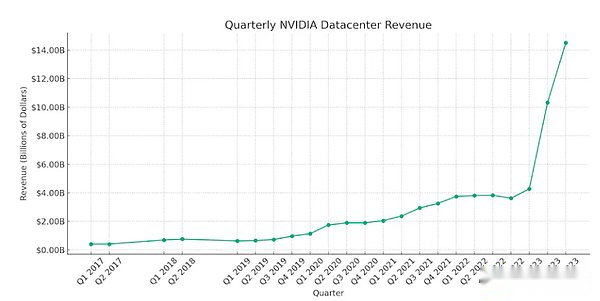
Source: NVIDIA quarterly report, @thomas_woodside from X on X
Those who make these assumptions are correct -the Livepeer network can of course be used by those who seek to deal with disruptive costs.With the growth of the Livepeer video use through LivePeer Studi in recent months and the launch of the Livepeer vault managed by the new community, it laid the foundation. It is time to introduce the AI video computing function into Livepeer.
The following part of this article will explain how to introduce artificial intelligence video computing on the Livepeer network, as well as plans, strategies, and timetables that make them realistic.
Task positioning -video filter
Livepeer’s background of mission and commitment
Livepeer is always committed to its mission: build the world open video infrastructure.Other computing platforms try to become a market that is a “AWS” or “running any type of computing task” type of “AWS on the Blockchain”. However, due to the lack of the ability to solve the industry, this has brought the market to the challenge part.On the contrary, Livepeer focuses on video computing through transcodes, and can build targeted products and GTMs for specific industries (more than 100 billion US dollars in video streaming markets) to solve actual use cases and dig out existing demand, rather than marketing no one.Want universal abstract solution.
Pay attention to video means that Livepeer avoids excessive reactions and turns to the latest popular trends such as ICO, NFT or DEFI, but always ask how these innovations are applied to video.High points are not so high, but more importantly, the low point is not so low.This also attracted a task -centered team and community with deep professional knowledge of video. They were excited about what we did for a long time, instead of leaving when the trend of this month lost motivation to leave power this month.Community.
At present, there is no trend more popular than the rapid rise of artificial intelligence.But unlike many cryptocurrency teams and projects, Livepeer did not give up its mission and “turned to artificial intelligence.”On the contrary, we raised such questions: how artificial intelligence will affect the future of the video.Artificial intelligence reduces the threshold of video creators in many ways.Two important factors are the time and costs of creating first, as well as the time, cost and professional knowledge of high -quality video production and output.
-
In terms of creation, generating artificial intelligence can be used to create video editing according to text or image prompts.In the past, setting scenes requires the crew, setting, camera, script, actor, editor, etc. Now only need to enter text prompts on the keyboard, and then wait for a few minutes to allow the GPU to generate potential results of the sample.Generating videos will not replace high -quality works, but it can save a lot of costs at all stages of the process.
-
In terms of production, whether it is created by artificial intelligence or the creator, functions such as upgrade, frame interpolation, and subtitle generation can quickly improve the quality and accessability of video content.Advanced functions such as interactivity in the video can be enabled by automatic object detection, shielding and scene type classification.
The timing of Livepeer using this AI function set is exciting because recently released the open source basic model, including Stable Video Diffusion, ESRGAN, FAST, etc. These models have maintained synchronization with the closed source proprietary model.The goal is to allow the open source model that everyone can access by open video infrastructure in the world. These models now exist, and it is better to quickly become better due to the innovation of the open source artificial intelligence community.
AI Background -Livepeer is suitable
Training, fine -tuning, reasoning
There are many stages of the artificial intelligence life cycle, but the three stages that usually require a large amount of computing power are training, fine -tuning and reasoning.in short:
-
Training requires creating a model and running on a very large data set.Sometimes, this requires tens of thousands or hundreds of millions of dollars when training basic models (such as models trained through Openai or Google).
-
Fine -adjustment is more cost -effective and uses existing basic models, but adjusts the weight according to a set of specific inputs of specific tasks.
-
Reasoning is a model that has been trained and adjusted, and allows it to produce output or predict according to the input set.For a reasoning operation, compared to the first two stages, this is usually cheap in terms of calculation, but it usually performs millions of times over and over again. Therefore, the cost of reasoning exceeds the cost of training.Essence
Training and fine -tuning requires access to large data sets and densely connected GPU so that they can communicate with each other and quickly share information.The network like Livepeer is not suitable for training that is used in the box, and needs to be updated to complete the task.Although decentralized networks as a substitute for proprietary large -scale technical training cloud are very attractive for training, due to the inefficient efficiency of network overhead and training basic models, from a cost perspective, whether the decentralized network has competition for competitionPower is doubtful.
On the other hand, reasoning is where decentralized networks like Livepeer can play a role.Each node operator can choose to load the given model to its GPU, and can compete in cost to perform inference operations according to the user input.Just like in the Livepeer transcoding network, users can submit assignments to the Livepeer network to perform AI reasoning, and they should get the benefits of competitive pricing in the open market. They can use the current idle GPU power to see cost benefits.
The GPU is the lifeblood of an artificial intelligence boom.The data center business of NVIDIA is based on GPU demand and has grown in index level in the past year.Elon Musk said jokingly that GPU is more difficult to buy than drugs.However, the DEPIN network like Livepeer has shown that through its open market developments and through inflation token awards, they can attract global GPU supply before demand, which can flexibly support the growth of new users and applications flexibly.EssenceAlmost infinitely use the capacity.Developers no longer need to reserve hardware when they are not used in advance at a high price, but they can pay at the lower market price as possible.This is a huge opportunity for decentralized networks to promote the prosperity of artificial intelligence.
Livepeer opportunity -submit AI reasoning tasks to the network instead of GPU
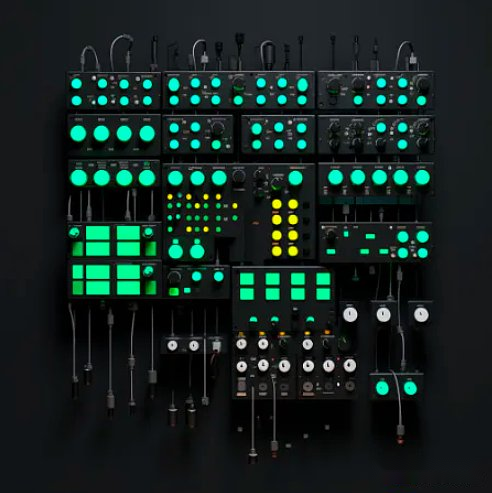
Let 1000 GPUs connected to Livepeer play a role
Cloud providers such as GCP or AWS allow you to “reserve the GPU server” on its corporate cloud.Open networks like Akash goes further, allowing you to rent a server on demand for one of many decentralized providers from all over the world.But no matter what the above choices, you must manage the rented server to run the model and perform the task.If you want to build an application that can perform multiple tasks at the same time, it must be expanded.You must link the workflow together.
Livepeer abstracts things as “work”, you can submit it to the network and believe it will be completed.Livepeer has achieved this through video transcodes, and its job is to submit a 2 -second video fragment for transcoding.You only need to send your homework to the network, and you can be sure that your broadcast node will reliable to complete the operation and be responsible for the selection of work nodes, fault transfer and redundancy.
For artificial intelligence video computing tasks, it can work in the same way.There may be a work of “generating videos from text”.You can believe that your node will complete this task, and you can extend it to any number of homework you want to submit through a single node. This node can use thousands of GPU networks to perform actual calculations.Take a step forward -this is still in the design stage -you can submit the entire workflow, such as
-
From text generating video
-
Rise
-
Perform the frame interpolation to make it smooth
The network can do this for you, and you don’t need to deploy separate models to individual machines, manage IO, shared storage, etc.It is no longer necessary to manage the server, extended server, and fail to transfer.Livepeer is a scalable infrastructure with the maximum cost benefits and highly reliable.If the network can fulfill these commitments calculated by artificial intelligence video, as it does in the video transcoding work, it will provide a new level of developer experience and cost reduction.Essence
It is planned to quickly introduce AI video calculations and verify the cost and benefits of the network
AI video subnet
Consistent with Livepeer’s past 7 years, the project will be committed to showing the real, available, functional, open source software and network capabilities, and then promotes “Livepeer with this”.The following is a short version of the plan to achieve this goal:
-
Select specific initial use cases for other job types, not just video transcoding: AI -based generating videos, which are upgraded by AI and supported by frame interpolation.Great open models, such as Stable Video Diffusion, are constantly developing every day in this field.
-
Fast operations by constructing the spike/peak of node software, these functions are added to our coordinator (supplier) node and broadcaster (demand side) node.Livepeer’s open media server Catalyst should support interfaces for requesting and using these video tasks.
-
Users who run this peak will form a seed network on Livepeer, but they will use the Livepeer protocol to discover and pay nodes to run this new feature through Livepeer’s main network.
-
Cooperate with consumer front -end applications, use Livepeer’s very cost -effective open computing network, and capture and display data from the cost benefits of Livepeer relative to the public cloud.
-
After we verify this, merge to the core Livepeer client, add other types of working types, and develop an ecosystem around other forms of video calculations.
-
Develop these AI functions as a Livepeer node fork
-
Node operators can form a sub -network to perform these tasks by paying on Livepeer’s main network.
-
A front -end application to show consumers.
-
The setting of the benchmark and data shows the cost benefits of the large -scale implementation of artificial intelligence reasoning in Livepeer network.

AI video subnet node runs with the transcoding node, and uses Livepeer to pay at the same time.
AI Video SPE
Livepeer recently introduced a community managed by the chain vault through its Delta upgrade, and has been using LPT for a public product plan for a few months.At present, a pre -pre -discussion is being discussed and approaching the voting. The proposal aims to fund a special purpose entity (or SPE). The entity is committed to making artificial intelligence video calculation prospects a reality.The first proposal is to achieve core development to complete the first four tasks listed above, including:
It also proposes future potential financing milestones, that is, providing infrastructure credit from the vault to pay the initial cost of consumers during the collection of the data collection.
The #AI-Video Channel in Livepeer Discord has become a hot spot for discussions and cooperation around the plan. Anyone who believes in open AI infrastructure and video AI calculates the future should come over and participate.Node operators have begun to test different hardware, familiar with running these open video models, and solve the challenges of turning from video transcodes to other video -specific operations.It is an interesting time to become a member of a rapidly developing project team.
future
Although this initial milestone can indicate that Livepeer has cost -effective AI video computing for specific forms of AI video, the real ultimate power is that AI developers can be a BYO model, BYO weight, BYO fine -tuning or deployment of custom LoRa based on the existing foundation of the Internet on the Internet.Above the model.
Support these initial functions and span a set of different models and computing forms, it will cause fast learning in the fields of node operation, model loading/uninstall on GPU, node discovery and negotiation, fault transfer, payment, verification and other fields.Calculate.From there, we can evaluate the future milestone of the production and support of any AI video computing operation on the Livepeer network.
In the early days, a specific platform (such as Livepeer Studio) could build APIs and products for video developers to use supported models.Consumer applications (such as applications proposed in AI Video SPE) can use these features directly on the Livepeer through the Catalyst node.However, with the expansion of these functions, the new artificial intelligence business centered on creators can be formed, and the global GPU network of Livepeer uses a customized experience in economically and efficiently without relying on expensive large technology clouds and its own exclusive proprietaryThe model is the business pillar.
This is an exciting path, you need to run to get there.There is no doubt that artificial intelligence will change the video world at a speed beyond our imagination in the next few years. We look forward to the world’s open video infrastructure will become the most cost -effective and effective calculation required for this bold new technology in the future.Expansion and reliable backbone network.






